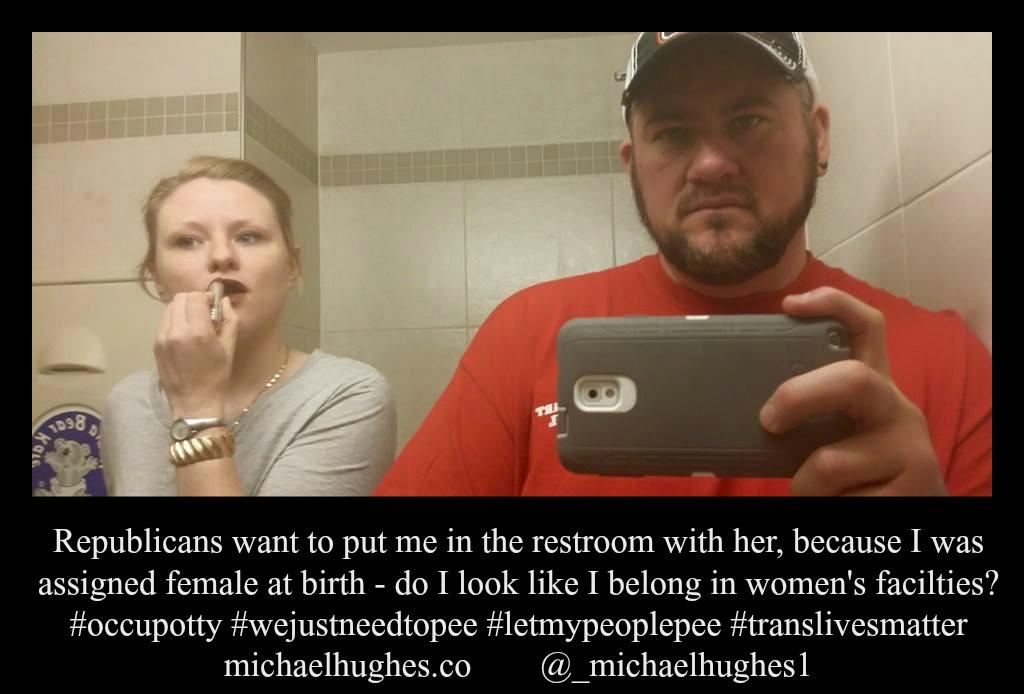ThinkProgress asks a good question.
Opponents of HERO, identifying themselves as the “Campaign for Houston,” have blanketed the city with billboards, radio ads, television ads, and other forms of messaging, all of which focus on the singular message: “No men in women’s bathrooms!” The “men” refers to a distorted understanding of transgender women, individuals who were assigned male at birth but who have the inherent gender identity of a woman and would find protection from discrimination for that identity under HERO.
One ad misleadingly claims, “Any man at any time could enter a women’s bathroom simply by claiming to be a woman that day.” The campaign has also referenced “gender-confused men,” whose use of women’s facilities is, as one ad described it, “filthy, disgusting, and unsafe.”
As trans editor and writer Mitch Kellaway explained to ThinkProgress, these tactics “are actively intended to attack trans women, who they see as the primary ‘threat’ to womanhood.” They erase and stigmatize transgender women’s identities, disregarding the fact that they even are, in fact, women — all the time. They also ignore the fact that, as HERO’s supporters have pointed out in their commercials, “indecent exposure, harassment, and assault in bathrooms is already illegal.” Most importantly, transgender women are not predators; they are individuals who, like everybody else, simply want to pee in peace.
But Kellaway is also concerned that these ads highlight “the passive transphobia that follows trans men in our society: our erasure from existence. We aren’t even fathomable to most people.” Masen Davis, co-director of Global Action for Trans Equality, echoed that sentiment to ThinkProgress. “So many of the arguments against HERO are based on fear and misunderstanding of transgender people,” he explained, but “they also depend on a lack of visibility of transgender men.”
Indeed, none of HERO’s opponents could provide ThinkProgress with the answer to a simple question: when it comes to bathrooms, what about transgender men?
They have no answer to that question, because as the story suggests, they’re in denial about the existence of transgender men. If trans men belong in the men’s room – and they do – then trans women belong in the women’s room, which is the exact opposite of what HERO opponents say. And if not, well, then read the story to see who will be forced to use the ladies’ room. Does that make any sense? What doesn’t make sense is trying to wish trans men out of existence, any more than telling lies about trans women does.


Transgender men are sort of invisible in this discussion.
But for the most part, so are transgender women. Whereas the hypothetical people being described by HERO opponents don’t exist, so far as I can tell.
If I am showering in a locker room and I see someone who may identify as a man, but has the goodies of a woman, I don’t find it upsetting if that person sees my junk. Most women I know, however, if the situation was reversed, would find it upsetting. It’s a double standard, part of what makes men and women different.